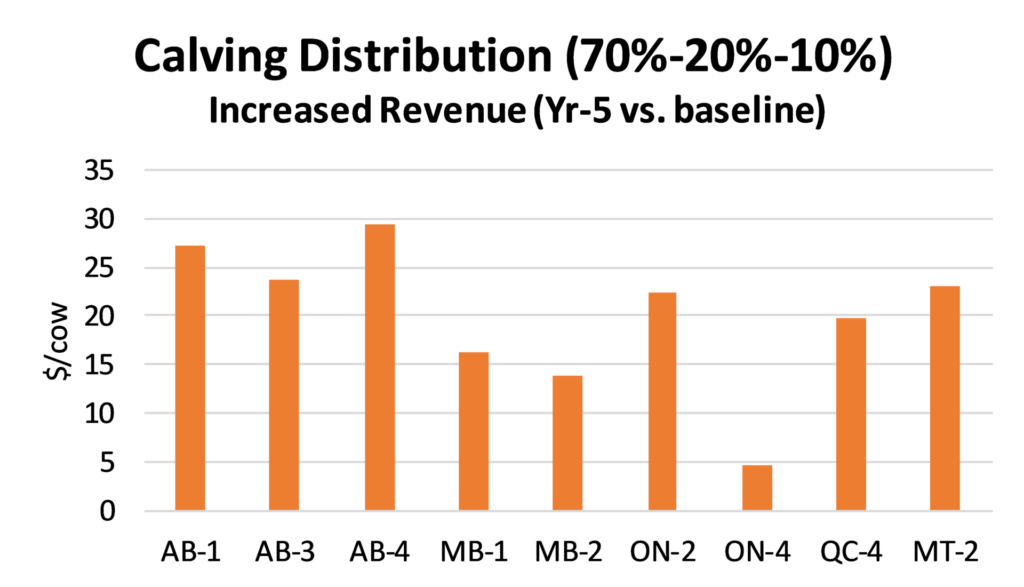One Size Doesn’t Fit All -Learnings from the Canadian Cow-Calf Cost of Production Network's Future Farm Scenarios
This is the first in a two-part series. Read part two.
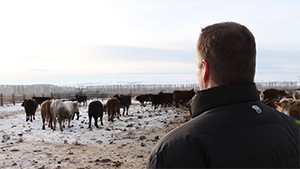
Are you considering investing in new infrastructure or technology and wondering how long it will take before it pays off? Or, looking to reduce costs but don’t know where to start? Perhaps you are questioning whether your time and effort spent on improving cattle performance is worth it?
Producers participating in the Canadian Cow-Calf Cost of Production Network (COP Network) shared the same questions. When addressing these questions in the COP Network’s future farm scenarios, it quickly became apparent that one size doesn’t fit all – similar investments or practice changes could have different economic results on different farms. More importantly, the analysis looked at why these scenarios work for some farms but not others, and what it means to producers.
Sign up to become part of the Canadian Cow-Calf Cost of Production Network by November 30, 2022. A $500 honorarium is provided to each participating farm.
About COP Network’s Future Farm Scenarios
Since 2021, the COP Network has collected production and financial information from over 180 cow-calf producers across Canada to generate 46 benchmark farms based on different production systems.
Producers participated in focus groups and brainstormed possibilities for new practices and technologies that could be adopted, and where incremental improvements could be made around productivity, input costs and marketing strategies. Future farm scenarios were then developed for each benchmark farm, simulating the potential impact of the selected practices on costs and revenues over a five-year period.
In 2021, the two scenarios selected by multiple groups were:
- extending the grazing season through rotational grazing and
- tightening the calving season.
Find more future farm scenarios on the COP Network webpage.
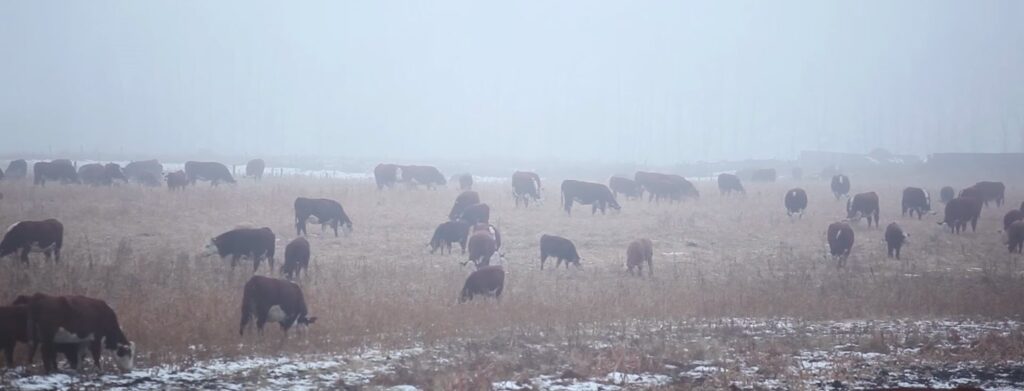
Rotational Grazing Scenario
Assumptions
Scenarios on extending the grazing season through rotational grazing were developed for 11 benchmark farms. Cattle prices, crop and forage prices, and yields were kept steady with the baseline year (2020) to eliminate some of the market and environmental volatilities.
The analysis assumes that a longer grazing season is achieved through improved grazing management, with purchase of a portable electric fencing system in year one to divide pastures into multiple paddocks, using the existing water source and distribution system. The cost of the portable fencing system doesn’t change significantly by herd size.
Stocking rates are assumed to increase by 10% as a result of rotational grazing. It is important to keep in mind that previous grazing management, species of forage, age of stand, soil type, fertility level and moisture conditions all influence forage yield and quality and consequently stocking rate. A wide range in forage productivity or stocking rate improvement was reported by producers and literature, ranging from five per cent to over 60% (Alberta Farmer Express, 2021; Andrae, 2003).
The major cost in this scenario is upfront fencing expenditures, while the major economic benefit is reduced feed costs and labour from fewer winter-feeding days.
The analysis also assumes that for some benchmark farms that sold hay in the baseline year, there is additional revenue generated from selling surplus hay that is now available because of the longer grazing season. There is less need for hay due to fewer winter-feeding days. For farms that did not sell hay in the baseline year, surplus hay is assumed to be stocked up for carryover, and not being sold to generate additional revenue.
Results
Only half of the farms can pay off the upfront investment in the simulated five-year period. Farms that do pay off in the first five years tend to have:
- Larger herd size – upfront cost is spread over more cows, reducing average cost per cow
- High feed costs – feed cost savings from rotational grazing were greater for the farms with high feed cost ($/head/day), especially those with a higher proportion of purchased feed
- Extra revenue – additional revenue from selling hay saved from a shorter winter-feeding period
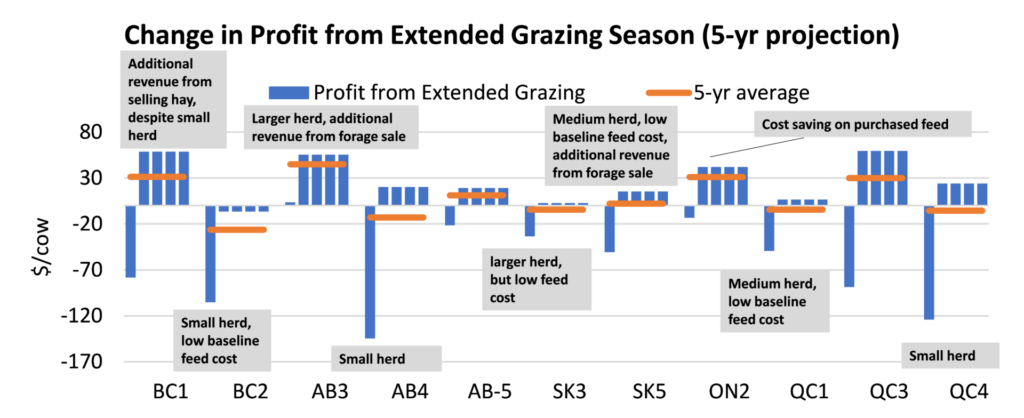
What does it mean?
These findings echo the existing research that shows the initial investment cost of rotational grazing hinges on the size of the grazing unit. For relatively small ranches, multi-paddock grazing strategies will probably not pay off in five-year period (Tong Wang, 2020). While larger farms may be more likely to pay off the upfront cost more quickly, smaller farms, especially those with high feed costs, could also make it work by generating an extra revenue stream from selling surplus hay or using cheaper fencing options.
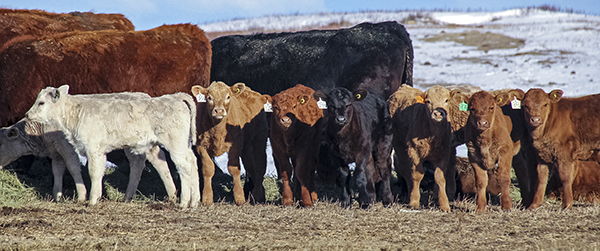
Calving Distribution Scenario
Assumptions
This scenario was developed for nine benchmark farms. The analysis assumes tightening the calving season to a defined three cycles or aiming for an ideal calving distribution with 70% calving in the first cycle, 20% in the second cycle and 10% in the third cycle.
The tighter calving window was achieved gradually over five years by pulling the bulls five days earlier each year and front-loading breeding heifers two to four weeks ahead of the cow herd. There is no additional cash expense, and the major outcome is heavier weaning weights.
Learn more about the economics of calving distribution and how to transition to a shorter calving season on the BCRC ‘s Calving Seasons webpage.
Results
The projected revenue gains from heavier weaning weights range from around $5/cow to $30/cow. The economic benefit from a tighter calving window depends on the baseline calving distribution. Farms with a longer calving season to start with tend to see larger revenue gain, while farms that already had a relatively tight calving season tend to have smaller revenue gain.
What does it mean?
For producers who already have a tight calving window, it may not be worth the time and effort to chase an even tighter calving distribution for a small increase in revenue. For example, ON-4 (shown in the chart above) had more than 85% of the herd calve in the first two cycles in the baseline year. Improving calving distribution to 70-20-10 is projected to increase revenue by only about $5/cow.
On the other hand, for producers who have a prolonged calving season, there is an opportunity for larger revenue gain from a tighter calving window.
Learn how to keep calving distribution records on the BCRC’s Farm Record-Keeping webpage, and estimate calving distribution impacts with the BCRC’s Value of Calving Distribution Calculator.
Uncover Opportunities; Be Part of the COP Network
The future farm scenarios show that the same management strategy can have different economic results for different operations given the diversity of production systems and cost structure in the cattle industry. A practice that is successful for one farm should not be directly applied on another without considering its unique conditions.
The COP Network brings producers with similar production systems together to share and learn about what worked and did not work for them and, more importantly, what are the opportunities in the future.
One size doesn’t fit all. The COP Network may help find what fits for your operation.
Sign up by November 30, 2022. A $500 honorarium is offered for each participating farm (two four-hour Zoom meetings).
LEARN MORE
- Canadian Cow-Calf Cost of Production Network (Canfax Research Services webpage)
- Cost, Profits and What If? The Canadian Cow-Calf Cost of Production Network (BCRC webinar)
- Rotational Grazing Improves Stocking Capacity and Ranch Profitability (South Dakota State University Extension post)
Sharing or reprinting BCRC posts is welcome and encouraged. Please credit the Beef Cattle Research Council, provide the website address, www.BeefResearch.ca, and let us know you have chosen to share the article by emailing us at [email protected].
Your questions, comments and suggestions are welcome. Contact us directly or spark a public discussion by posting your thoughts below.
